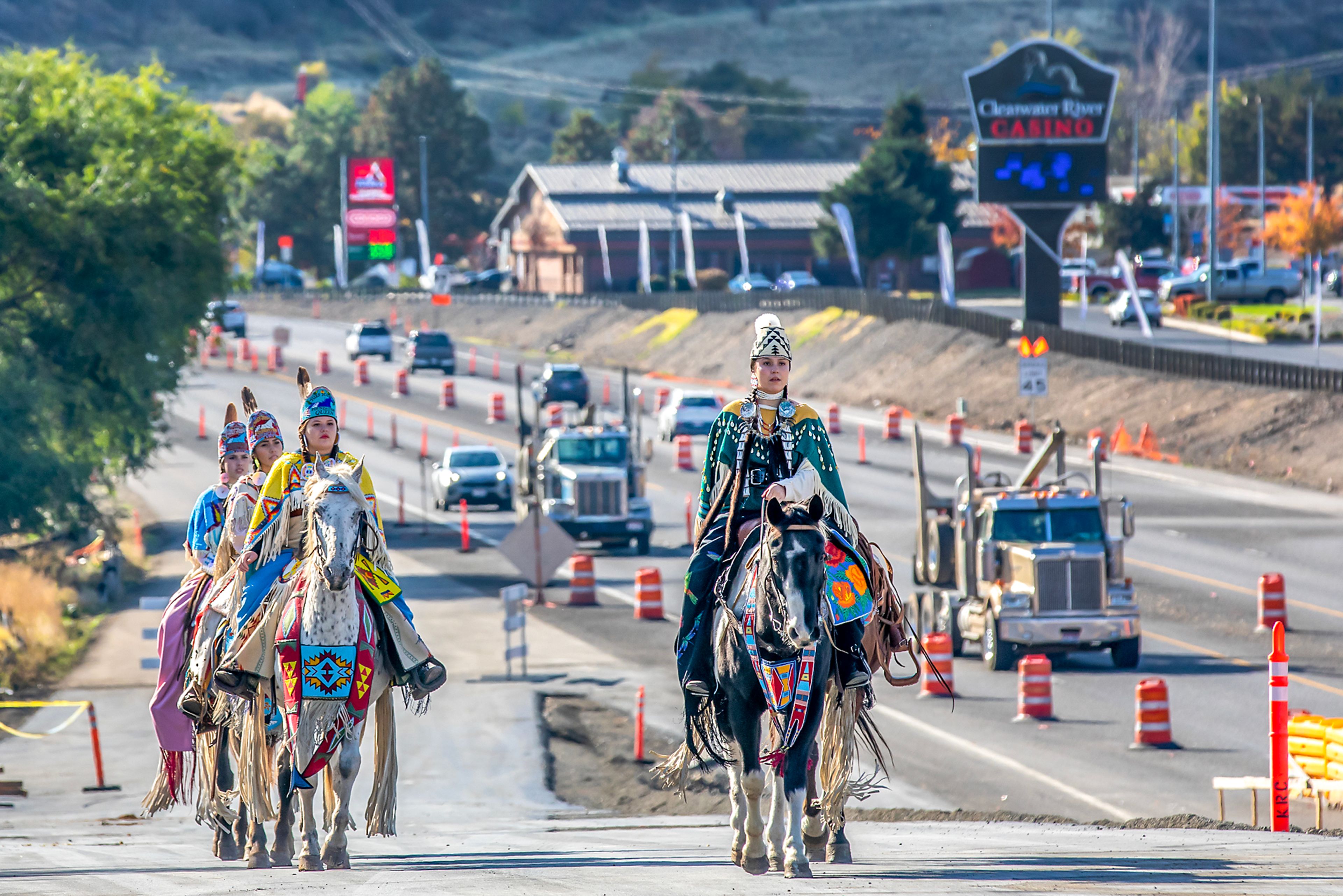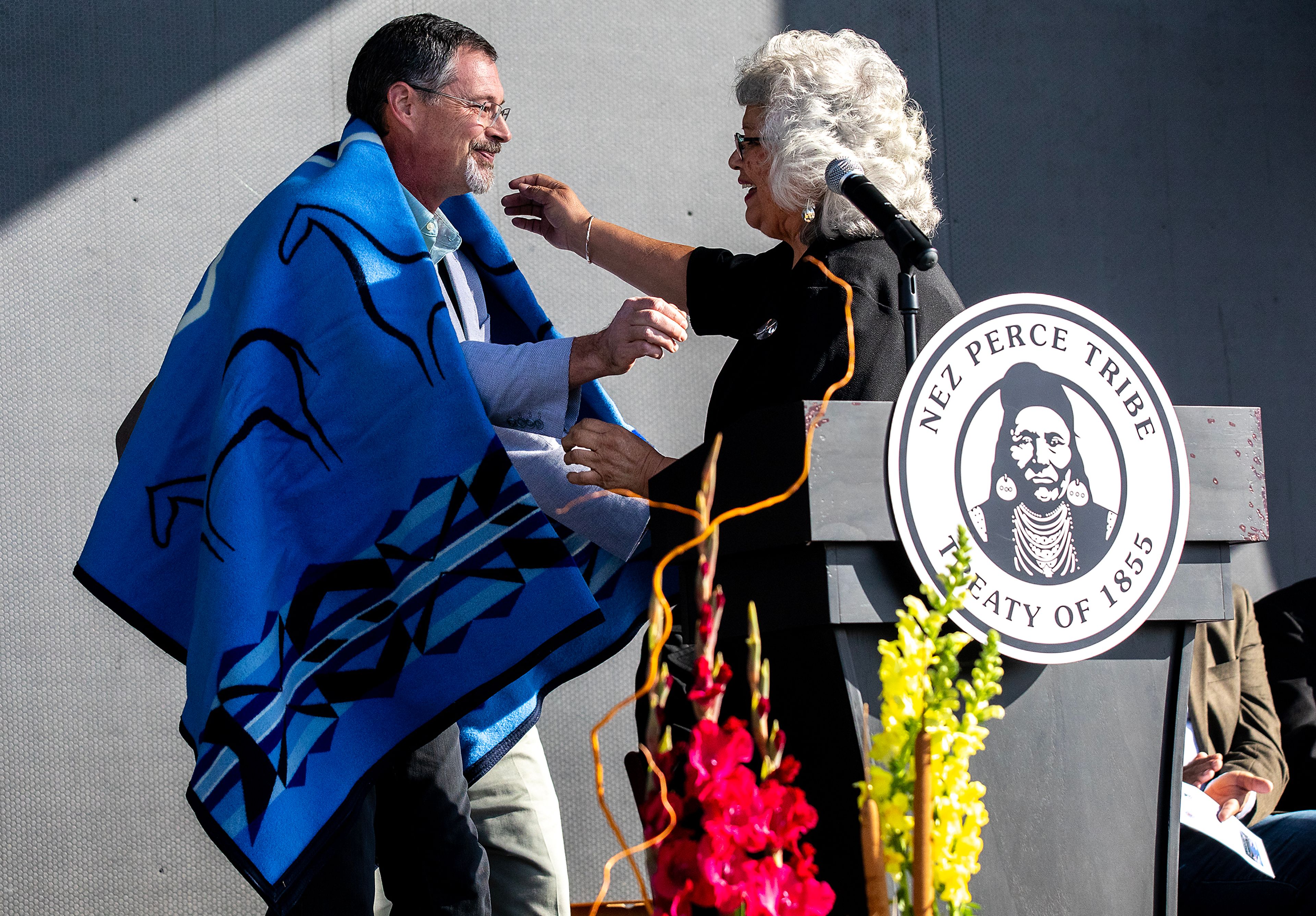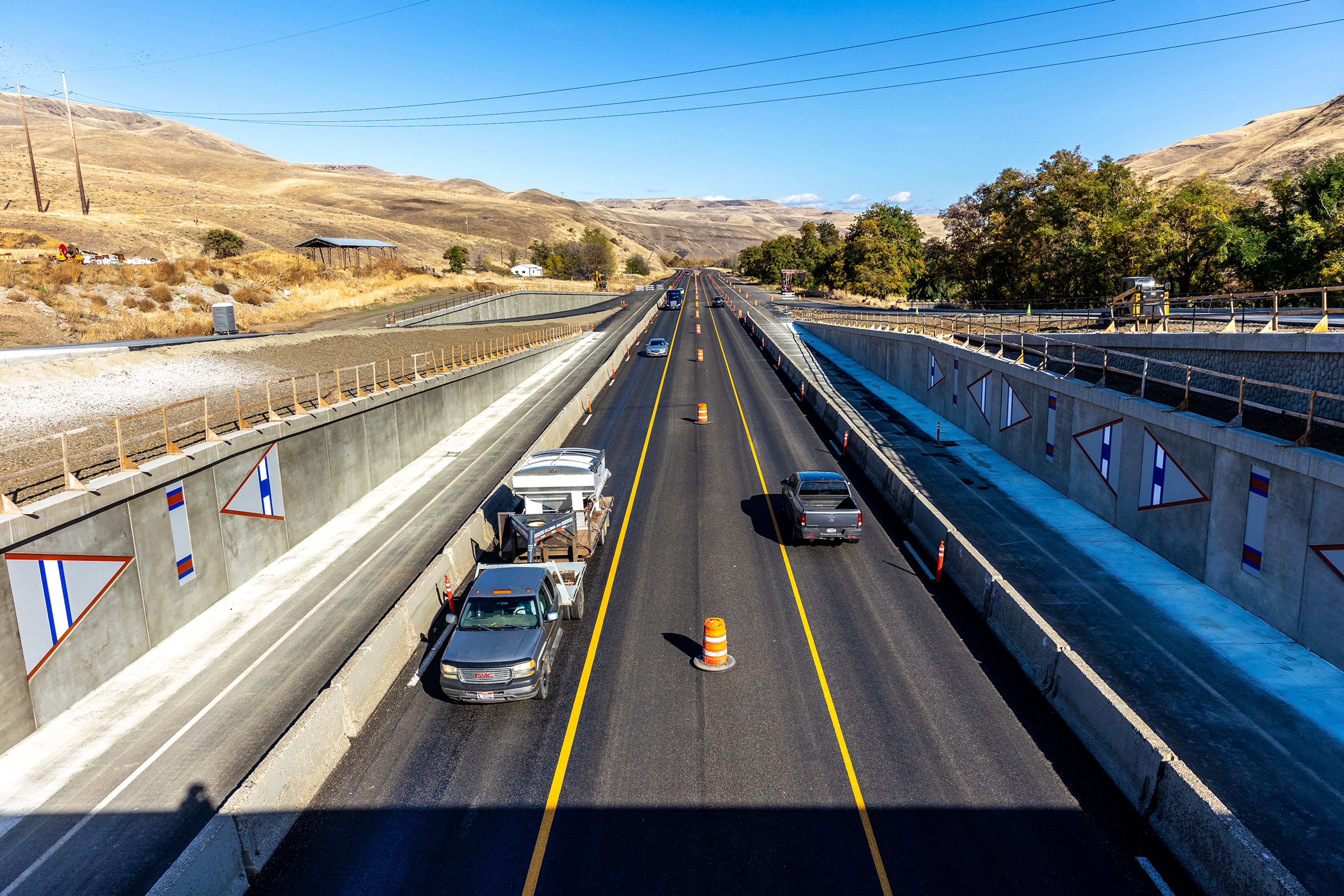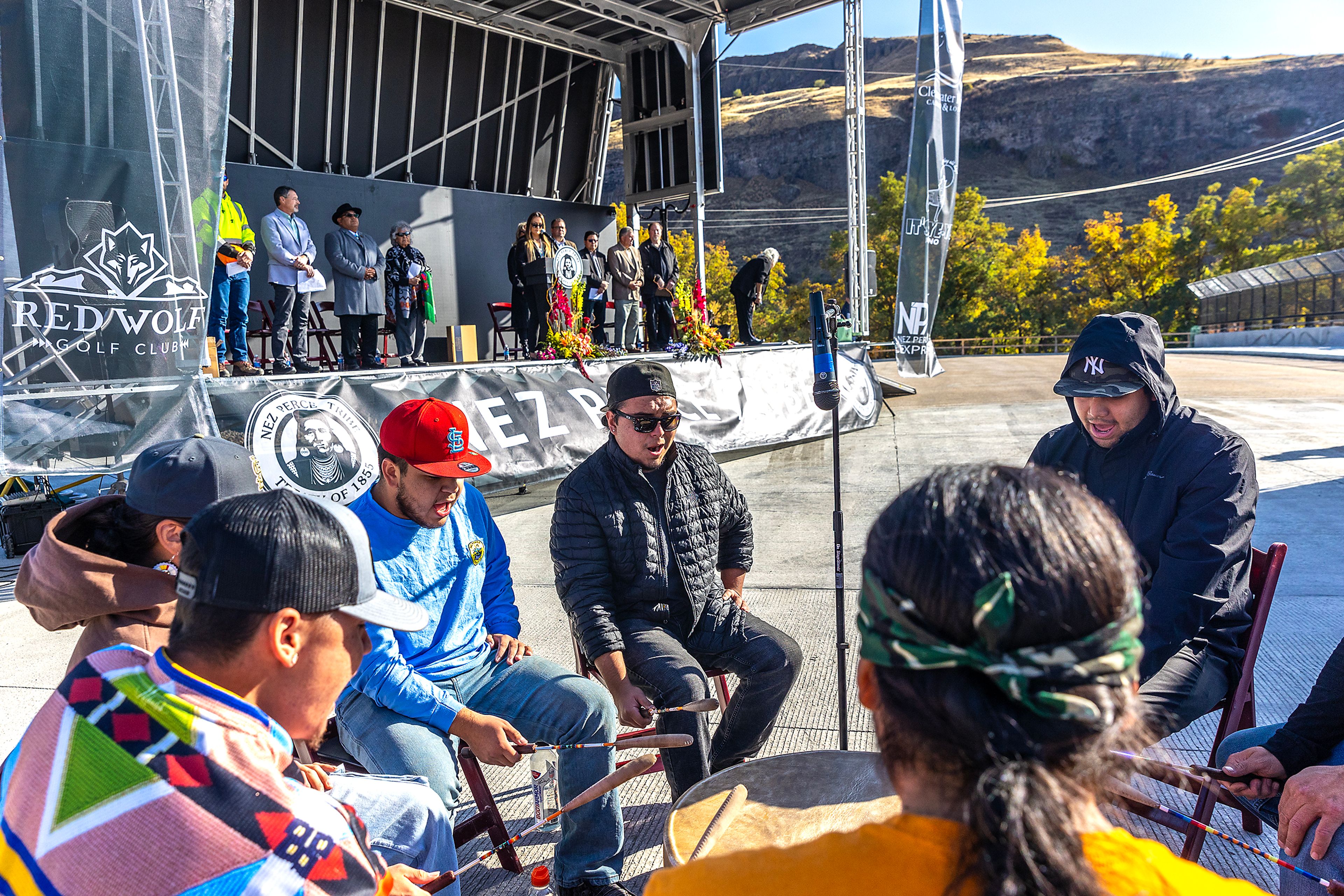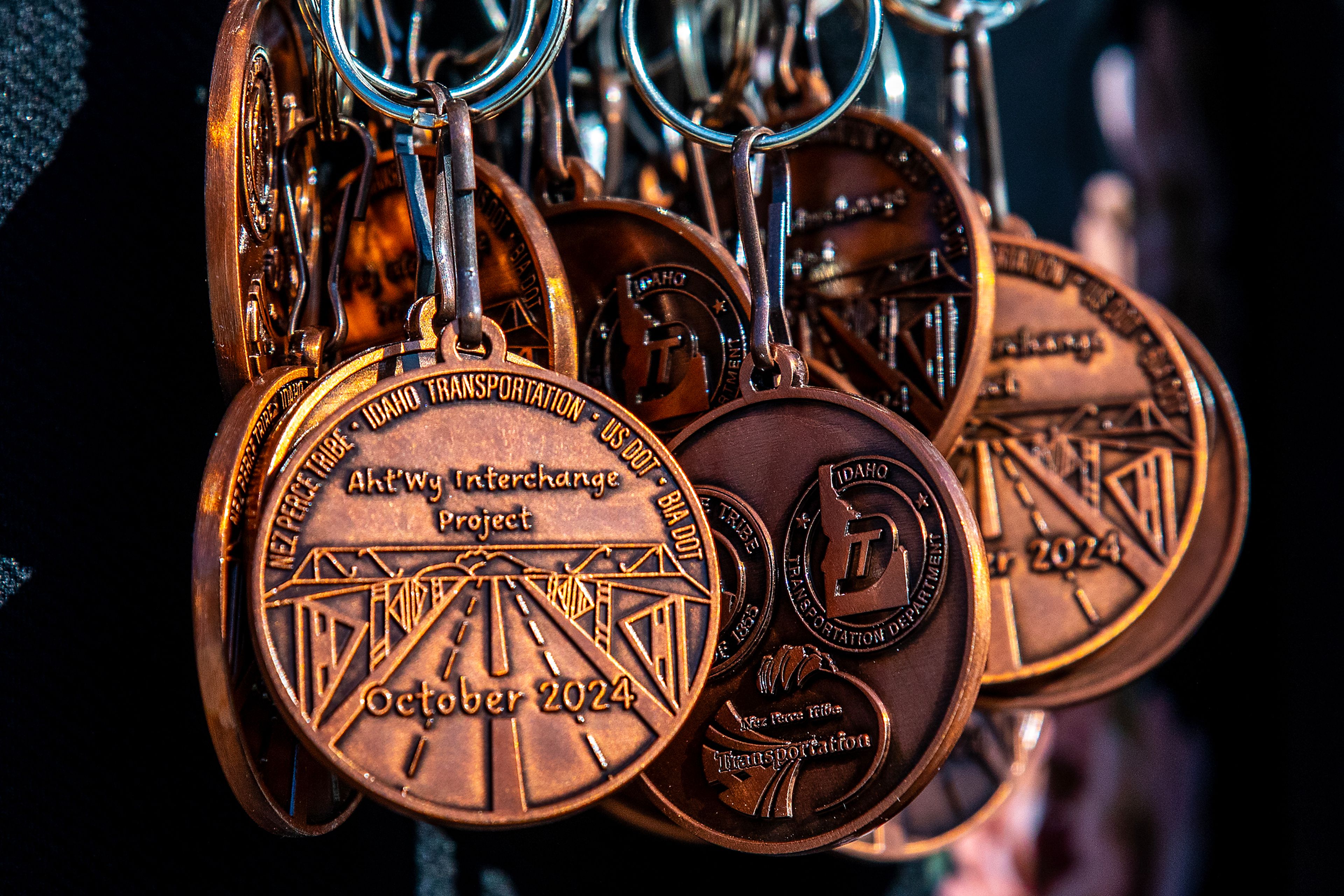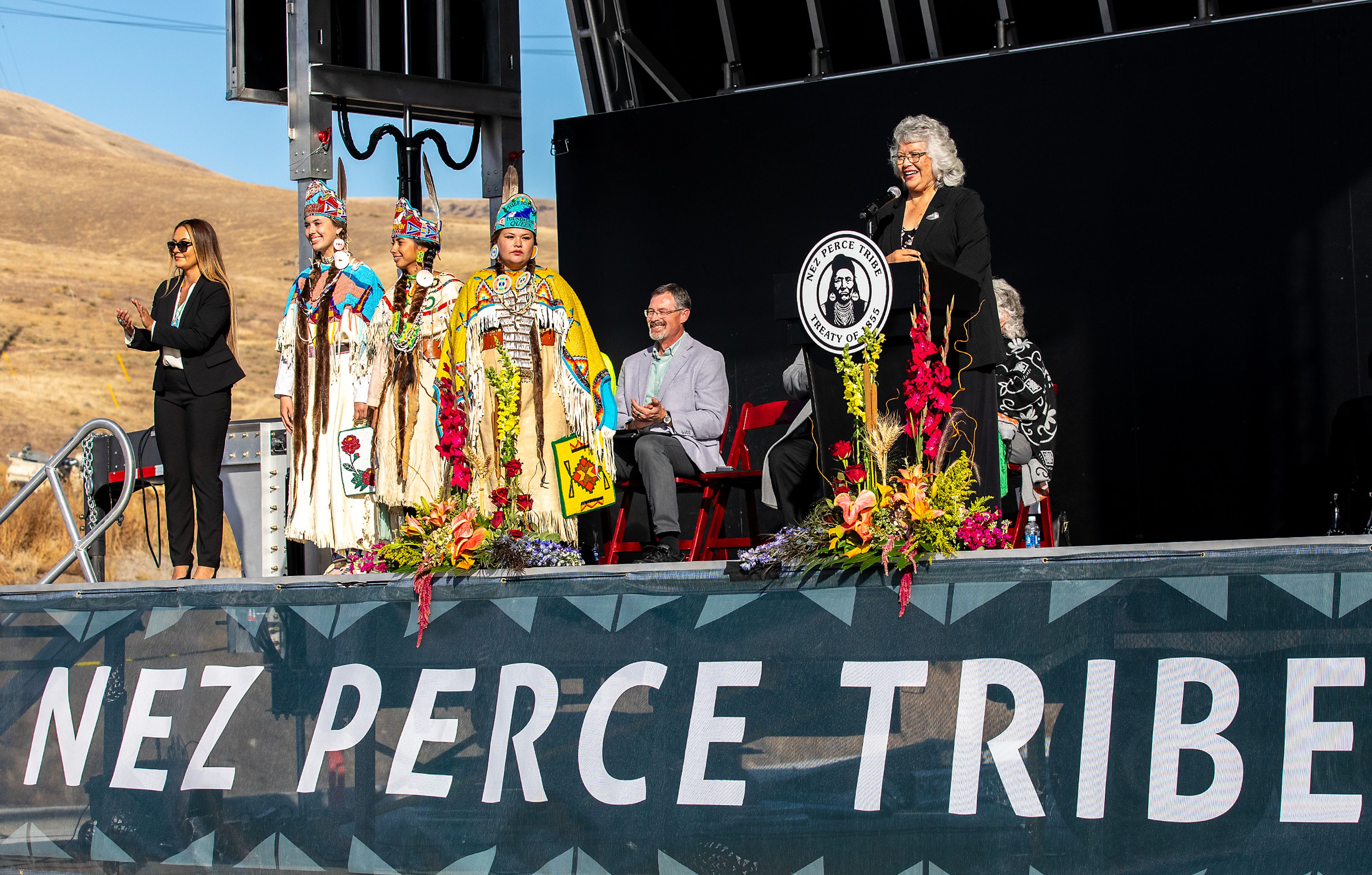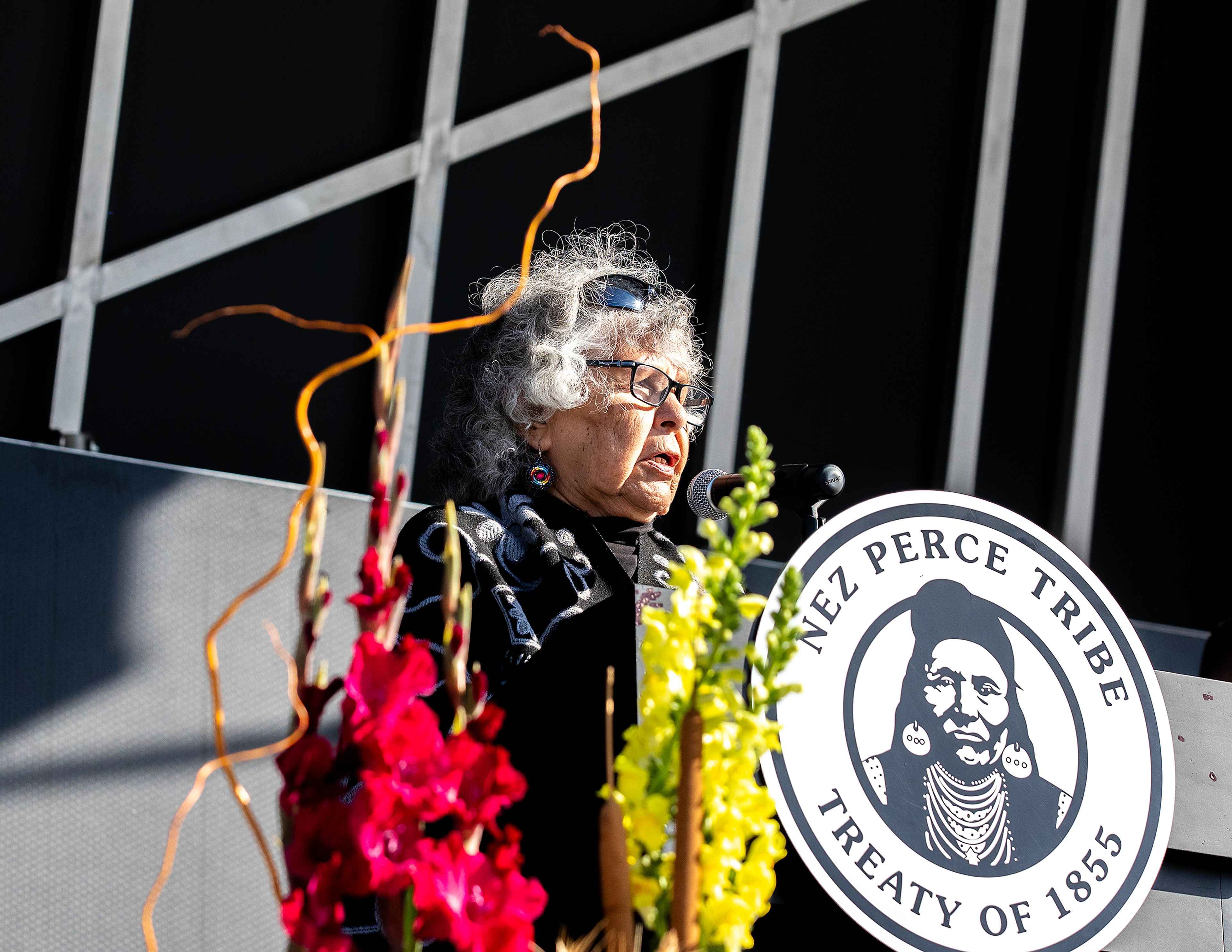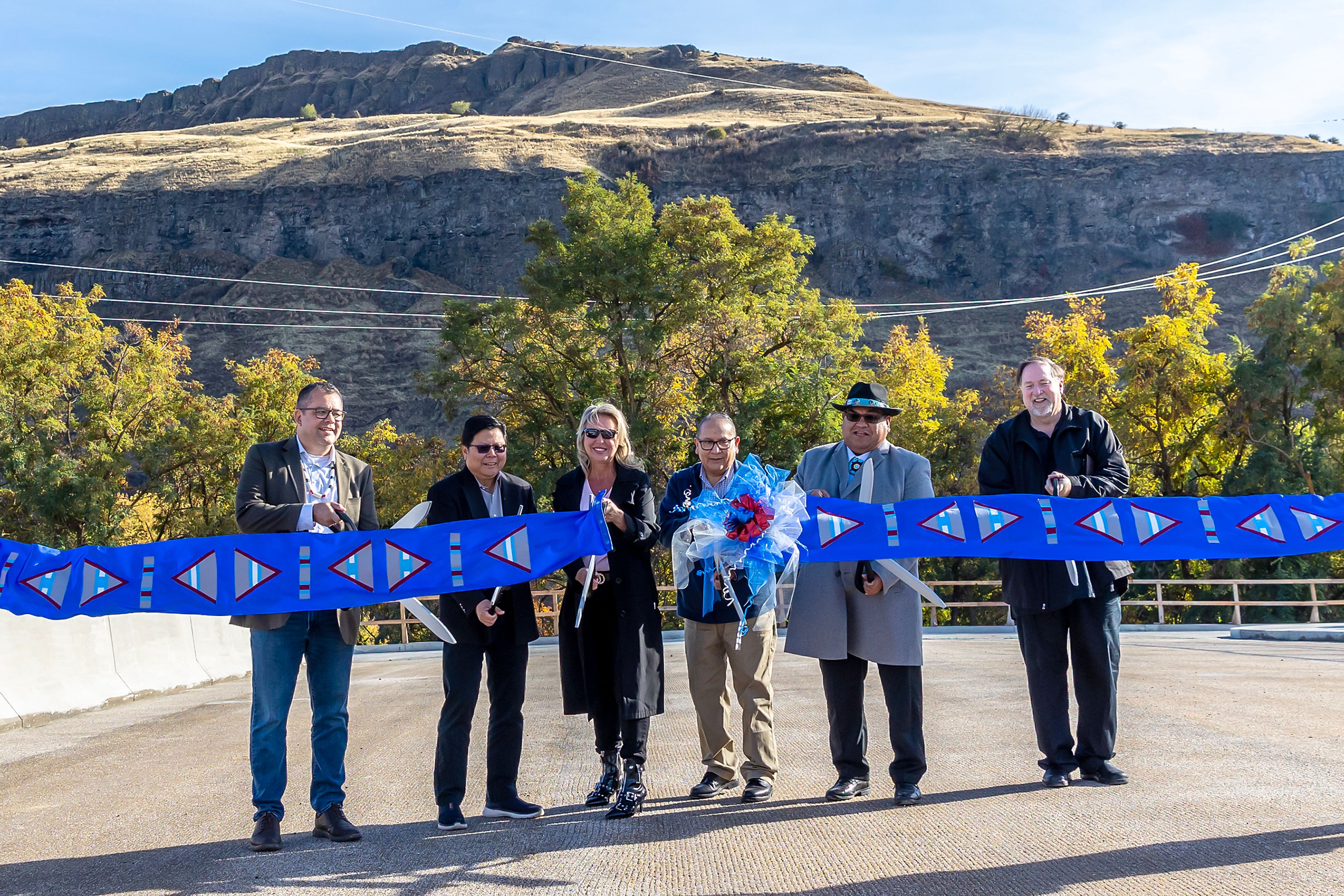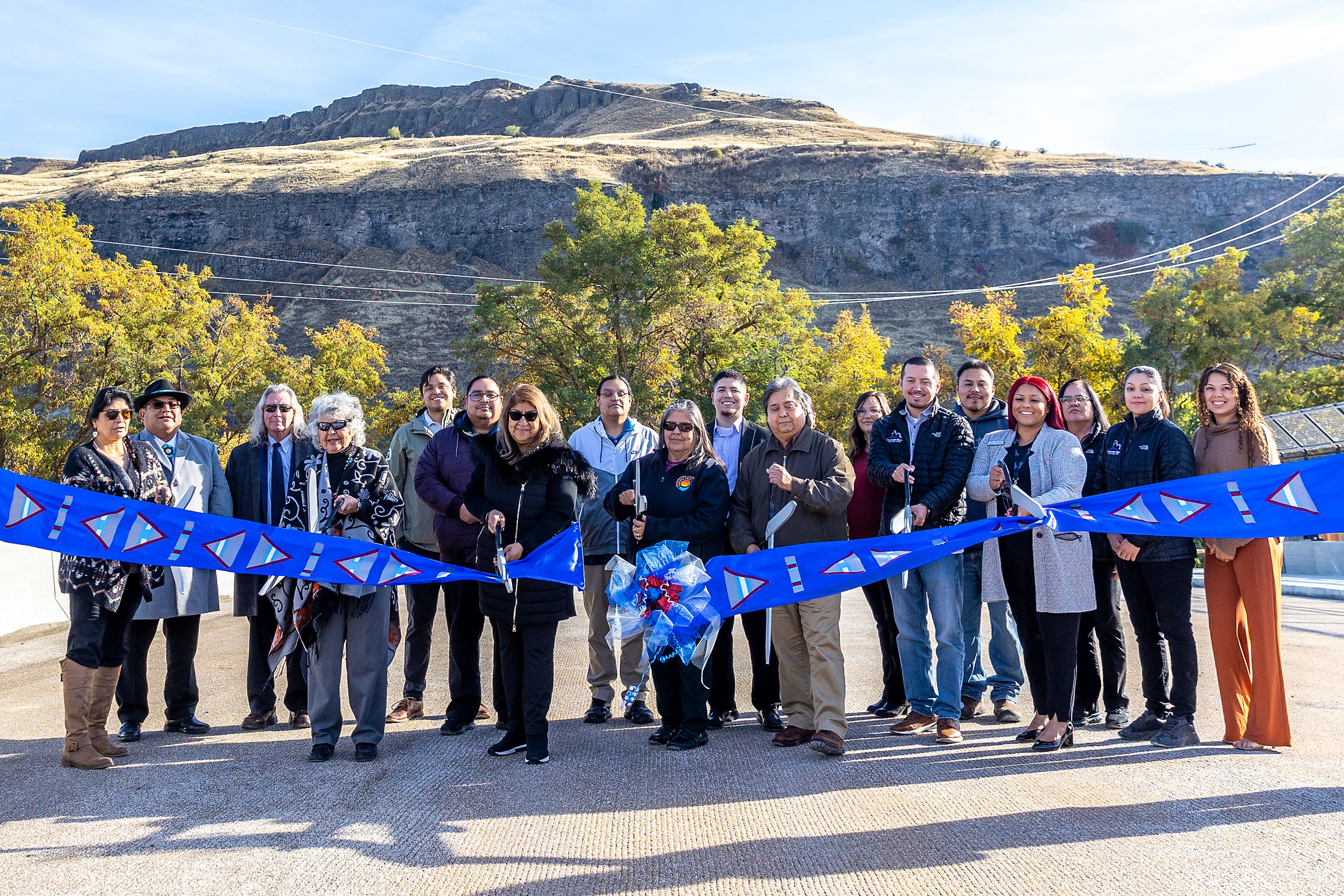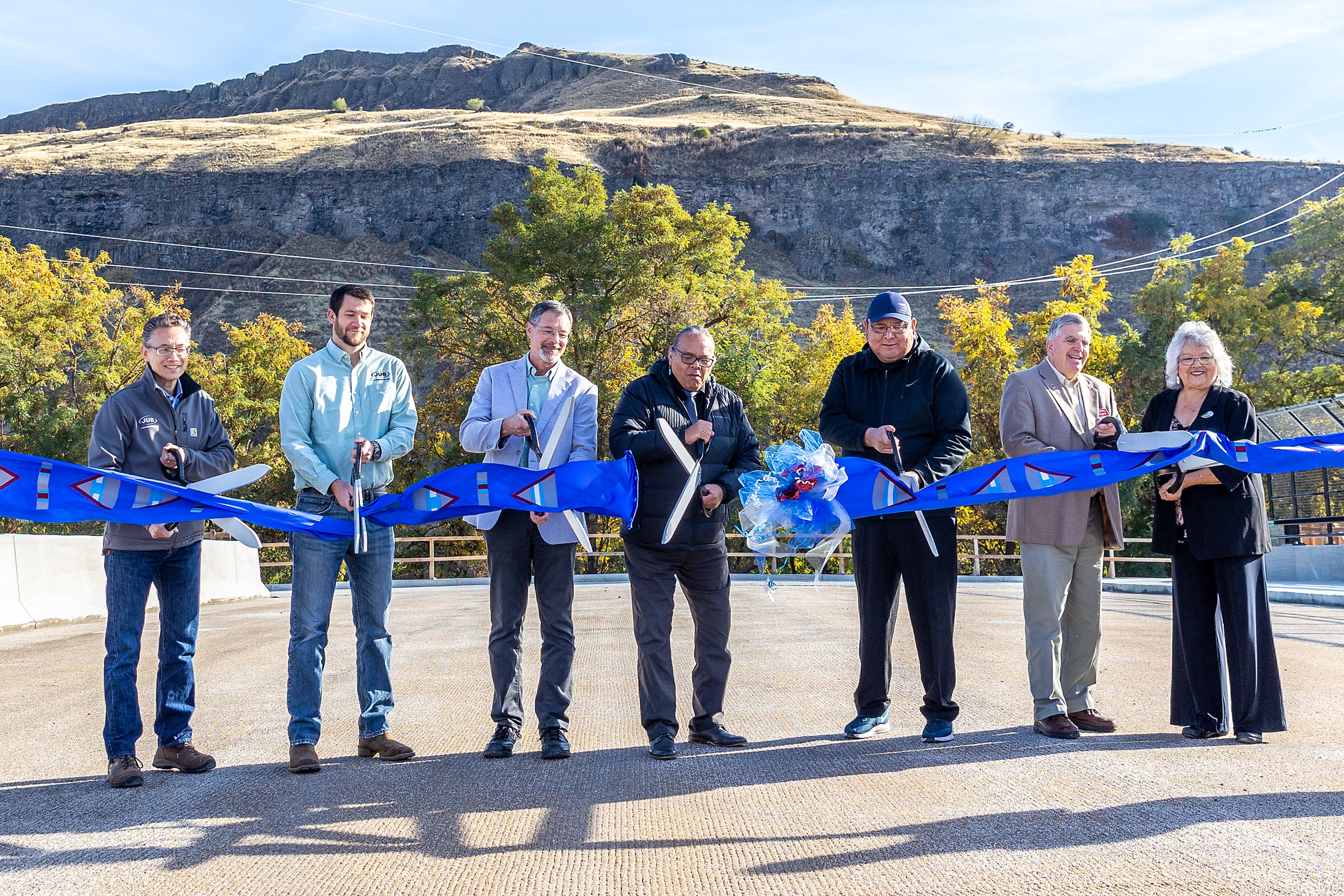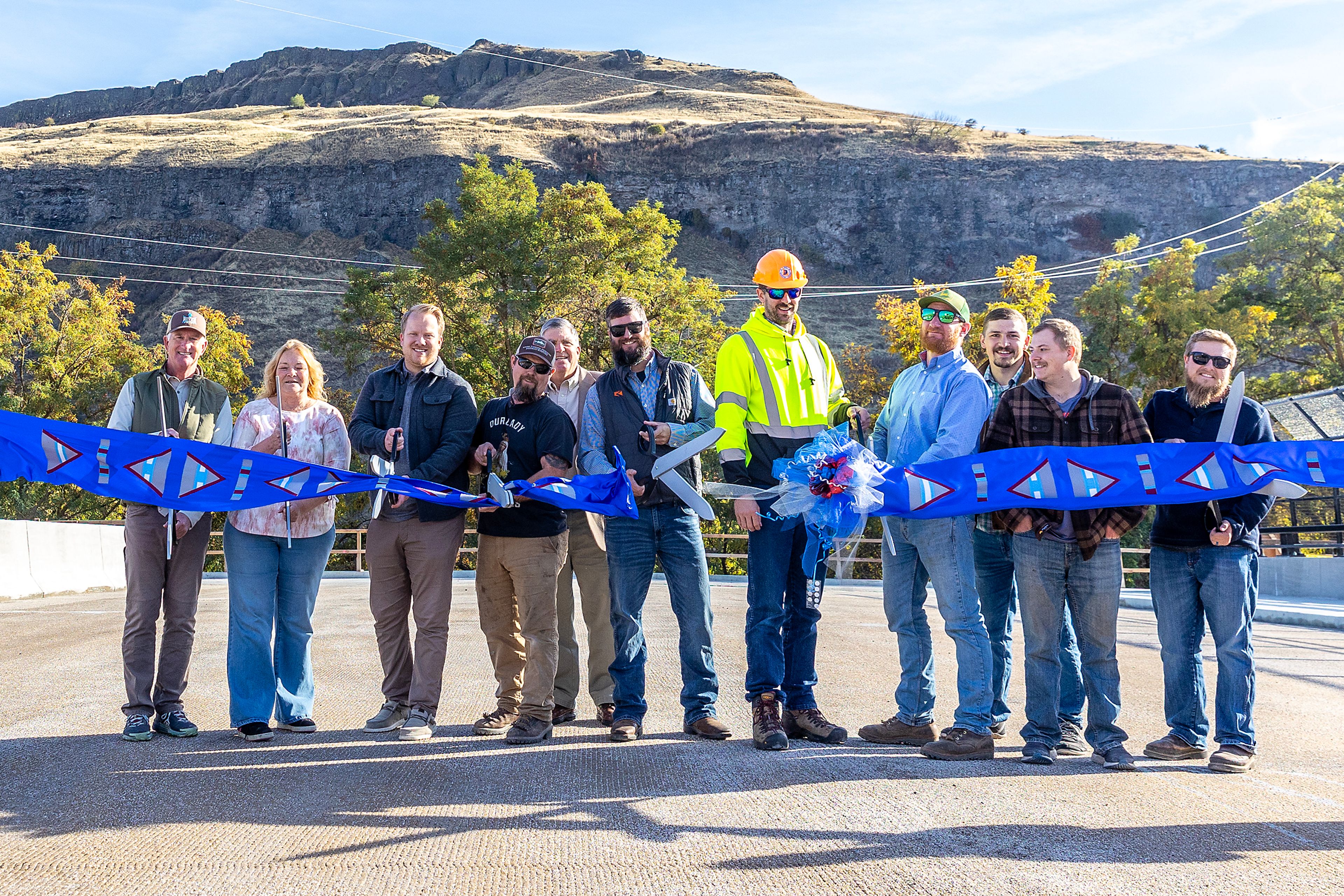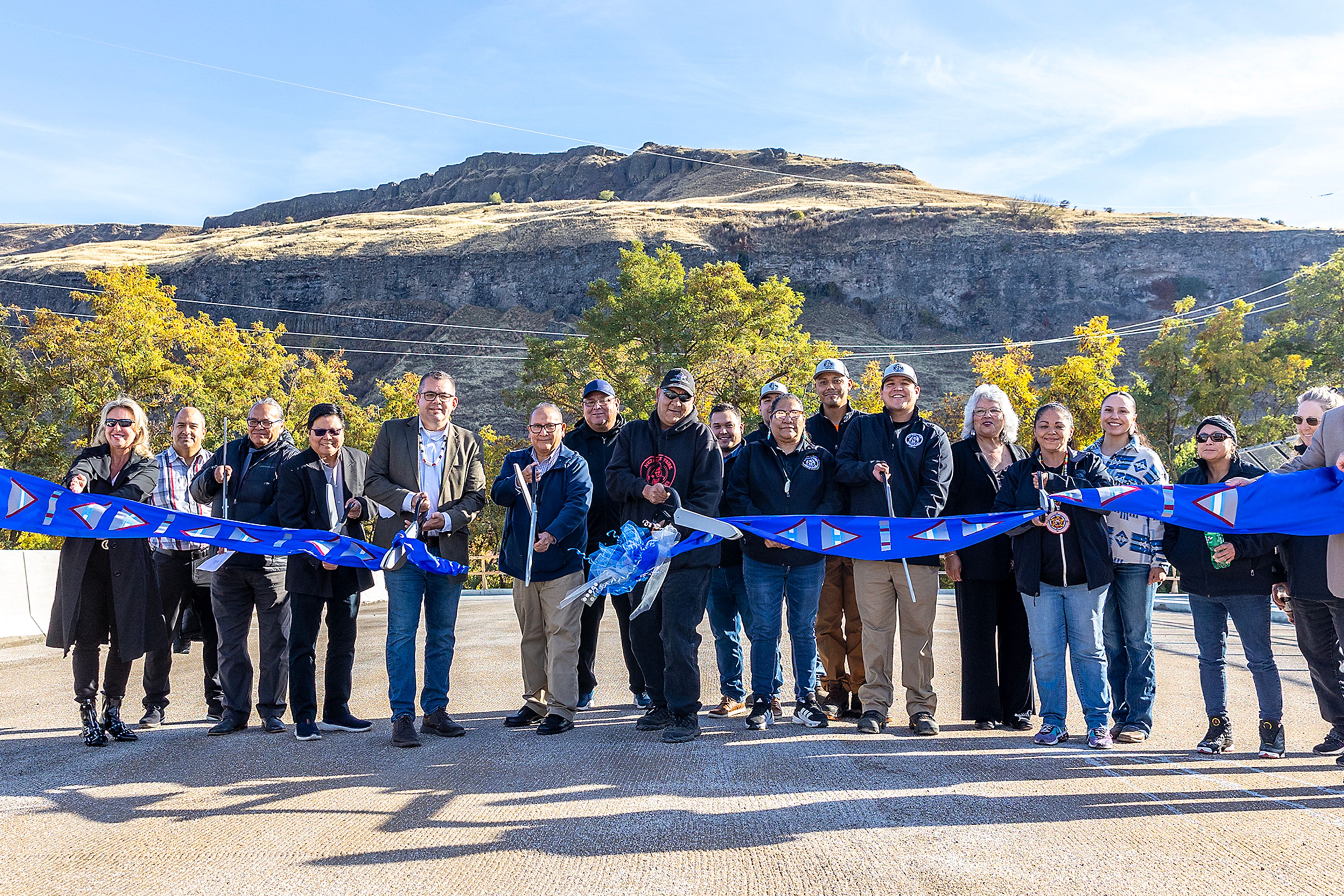Aht’Wy Interchange bridge ribbon cutting ceremony celebrates nearly 20 years of work to improve safety
The roadway is expected to be finished the first week of December
The Aht’Wy Interchange bridge on U.S. Highway 95/12 at the Clearwater River Casino had a ribbon cutting ceremony filled with celebration as the project nears completion, and solemnity because of the lives lost on the dangerous highway.
Although the ceremony took place Thursday, Mary Beth Clark, Nez Perce Tribe transportation manager, said the roadway is expected to be finished the first week of December. The ribbon cutting was held now to avoid a December celebration as well as accommodating administrative changes so the ceremony could honor as many involved in the project as possible.
The ribbon for the ceremony, which was cut by different groups involved in the project, was designed like artwork on the wall of the bridge modeled after the Chief Joseph sash. In addition to the artwork on the wall panel, there will also be a metal artwork display on the fencing at the top of the bridge that will mimic the hills’ silhouette, which is called the Sleeping Chief, said Jesse Webb, project engineer for the Idaho Department of Transportation District 2.
The $25 million project eliminates the need for eastbound drivers to make cross-traffic left turns to enter and exit the casino and other businesses in the area. Instead, motorists will use the interchange — essentially an overpass — to access and exit the area.
The work is a partnership between the tribe, Idaho Transportation Department, Bureau of Indian Affairs, Federal Highway Administration and the U.S. Department of the Interior. Members of those agencies were present at the ribbon cutting and many gave speeches.
Nearly every speaker acknowledged Clark’s work in helping the project come to completion. She was credited for her persistence on the project and continued work for the tribe. She was honored for her collaboration with all the tribal, local, state and federal agencies. John Watson, project manager for J-U-B Engineers, said Clark networked with many governmental agencies, even Congress, to get funding and approval. Through that she was always positive and good to work with.
“(Clark) is way too humble to say it, but this project would not have been done without her,” he said, earning cheers and applause from the crowd.
Clark wasn’t expecting the comments she received from those who spoke, saying she was just one part of the large and long project. She was glad for the crowd who gathered at the event.
“It’s not just for the tribe,” Clark said. “It’s for everyone, to make people safe.”
Stacia Morfin, CEO of Nez Perce Tourism, introduced the Lightning Creek Drummers and the Nimiipuu Riders as well as the groups for the ribbon cutting. As the drummer beat the drum and sang, the riders came up and down the interchange crossing the bridge. Morfin noted that the path of the riders has been part of the Nimiipuu land “since time immemorial” and the area that they have traveled.
Shannon Wheeler, Nez Perce Tribal Chairperson, shared that for the Nez Perce, the area is where the Creator called the animals to be counted and named before people were there.
“It’s very important for us as a tribe as our history and our place of beginning because it is those things that we think about when we do things like this,” Wheeler said. “The things that we do as a tribe under our ‘tamalwit,’ our unwritten laws of how we interact with the land and what that means to us.”
Morfin also noted that the lodge, casino and gas station, also in ancestral Nez Perce land, offers food, fuel and rest to travelers in the region.
“That is again something we have done since time immemorial,” she said.
As the riders passed by the crowd, Morfin highlighted that the riders also had a horse with an empty saddle to represent and honor the lives lost on the highway and those who were part of the project but didn’t live to see it come to completion.
The project has a long history that was provided by Watson, which began before his youngest daughter was born — she is now a senior in high school.
“With a mindset of patience and perseverance, the project team kept focus on the problems at hand and put one foot in front of the other and did what needed to be done for as long as it took,” Watson said. “And today, we are witnesses to those successful efforts to make one of the most dangerous intersections in the state a much safer facility.”
The crowd applauded and cheered Watson’s statement.
Watson summarized the lengthy project, saying that in the mid-1990s the tribe developed the original casino. In the 2000s, discussions began on access improvements and in 2006, the tribe decided to build a grade-separated interchange as a long-term solution. In 2008-09, the east interchange option was preferred and eventually became the current project. From 2010-12, the design process began as well as the environmental process, which Watson said had challenges that stalled the project. In 2017, modifications were made to solve the environmental concerns.
Then construction funding needed to be resolved, so in May 2020 Clark submitted a grant and in October of that year it was approved.
“You think back to important parts of your life when you hear something, that’s significant,” Watson said, becoming emotional. “I still remember. I remember where I was that day.”
Through 2021-22 work was continued on the grant agreement. During that time, the COVID-19 pandemic and inflation made the funding from the grant insufficient. Clark started “diving for dollars,” Watson said. Then she found bridge funding through the Bureau of Indian Affairs and got it secured.
“I just want to reiterate what a team effort this was, all parties were invested in a positive outcome. The accidents weighed heavily on all of our minds and instead of any adversarial attitudes or pointing fingers we all worked together to get it done.”
Watson was presented with a Pendleton blanket from the tribe for his work on the project.
Webb gave an update on the construction of the project that has taken 68,000 hours of labor so far, which is about the size of a football field. An archaeological discovery briefly slowed down the project, and the team modified the design and construction to avoid any issues and get back on track.
Those at the event and who helped with the project were given beaded keychains with a medal that has the bridge design etched on it. Clark said they wanted to give people something commemorative that would last.
While there is still work to be done, the finish line is closing in.
“I can’t wait to drive on it,” Clark said.
Brewster may be contacted at kbrewster@lmtribune.com or at (208) 848-2297.
